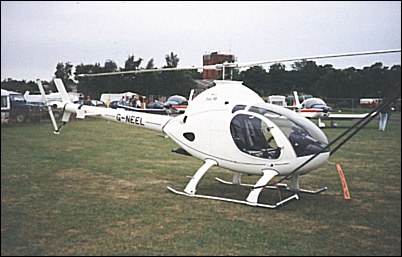
| Rotorway Exec 90 1980 |  |
 |

| Rotorway Exec 90 1980 |  |
 |
|
After selling three "Elete" helicopters, the company finally succumbed to financial challenges and was soon purchased by a former customer, John Netherwood, a businessman from England. The new company recognized the design hurdles of the "Elete" and promptly set out to address making the proven "Exec" model a better aircraft to sell. With invaluable input from the employees themselves, the work began. The "Exec" was reviewed from top to bottom. Any and all suggestions from the experienced staff were considered, evaluated and many implemented. Extensive redesigning was done and when all was complete, 21 items were changed or improved including the aerodynamics, drive train, stability and power. The engine was once more a primary area of improvement, a task made even easier by the fact that RotorWay had been engineering and manufacturing their own engine for years by this time. The RI 162 cubic inch engine was specifically designed for rotorcraft flight and possessed an incredibly light weight to horsepower ratio. Extended life limits were added to the chains, belts, rotor system and asymmetrical blades. Improvements were made in every aspect of the aircraft including the method of packing and organizing the kit, the manuals, and the customer service program to assist the builder with technical information. Many critical systems were then assembled by RotorWay itself, almost all of the fabrication completed for the builder. All of the welding was now done at the factory as well. The rotor blades required little more than finishing touches. The tailboom had been formed and riveted and was ready for inspection covers to be fitted and mounted on the airframe. The wiring harness was assembled and tested, coming ready for installation. The Exec 90 was the only piston-powered helicopter at the time to utilize an asymmetrical airfoil for improved autorotation characteristics and safety. The Exec 90 also utilized a unique drive system, eliminating an expensive transmission, metal chip detectors and possible in-flight failures. With all of this in place, the expected build time with the standard kit was about 500 hours. A quick build kit was soon offered, cutting that time nearly in half. Eventually, the quick build kit became the only way in which to purchase the helicopter. Pilot and passenger load was 180λο with a normal cruise of 153km/h and a maximum airspeed of 185km/h.
|